Showing Spotlights 1001 - 1008 of 2785 in category All (newest first):
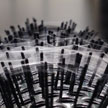 Researchers developed a simple controllable set-up for drawing single filament nanofibers from polymer solutions or melts using a rotating rod or a set of rods (round brush). This method can be used to produce 3D tissue scaffolds by winding nanofibers onto spools of different shapes and dimensions and depositing cells of interest at the same time. The new method, which the scientists named touch-spinning, has excellent control over the fiber diameter and is compatible with all kinds of polymeric materials, polymer melts and solutions, polymer composite materials, and biopolymers.
Researchers developed a simple controllable set-up for drawing single filament nanofibers from polymer solutions or melts using a rotating rod or a set of rods (round brush). This method can be used to produce 3D tissue scaffolds by winding nanofibers onto spools of different shapes and dimensions and depositing cells of interest at the same time. The new method, which the scientists named touch-spinning, has excellent control over the fiber diameter and is compatible with all kinds of polymeric materials, polymer melts and solutions, polymer composite materials, and biopolymers.
Sep 23rd, 2015
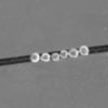 Researchers engineered synthetic nanomotors that self-propel and autonomously detect surface cracks in electronic devices and rapidly restore the conductive pathway. These nanomotors were inspired by the chemotaxis of neutrophils toward inflammation sites and the aggregation of platelets at the collagen fibers of a wound to stop bleeding. The catalytic nanomotors are composed of conductive gold/platinum spherical Janus particles that self-propel efficiently in the presence of hydrogen peroxide fuel.
Researchers engineered synthetic nanomotors that self-propel and autonomously detect surface cracks in electronic devices and rapidly restore the conductive pathway. These nanomotors were inspired by the chemotaxis of neutrophils toward inflammation sites and the aggregation of platelets at the collagen fibers of a wound to stop bleeding. The catalytic nanomotors are composed of conductive gold/platinum spherical Janus particles that self-propel efficiently in the presence of hydrogen peroxide fuel.
Sep 22nd, 2015
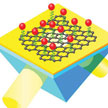 With increasing sensitivity, electrical, mechanical and optical sensors are able to detect low molecular weight chemical and biological analytes under ever more dilute conditions. At the same time, though, researchers want to keep the sensing process as simple as possible without complex functionalization and complicated preparation steps for the in situ detection. A novel graphene-gold metasurface-based biosensing architectures makes extreme phase singularities possible due to a strong field enhancement on the graphene-gold interface.
With increasing sensitivity, electrical, mechanical and optical sensors are able to detect low molecular weight chemical and biological analytes under ever more dilute conditions. At the same time, though, researchers want to keep the sensing process as simple as possible without complex functionalization and complicated preparation steps for the in situ detection. A novel graphene-gold metasurface-based biosensing architectures makes extreme phase singularities possible due to a strong field enhancement on the graphene-gold interface.
Sep 14th, 2015
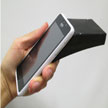 A typical preliminary test for tuberculosis includes culturing the samples for at least 1-2 weeks in a lab, followed by examination under a fluorescence microscope. The lack of rapid, accurate, and inexpensive point-of-care tools for detecting low amounts of M. Tuberculosis is a critical bottleneck in early diagnosis and appropriate treatment. Researchers have now developed a rapid and flexible nano-biosensor for diagnosing TB in early stages using smart phones.
A typical preliminary test for tuberculosis includes culturing the samples for at least 1-2 weeks in a lab, followed by examination under a fluorescence microscope. The lack of rapid, accurate, and inexpensive point-of-care tools for detecting low amounts of M. Tuberculosis is a critical bottleneck in early diagnosis and appropriate treatment. Researchers have now developed a rapid and flexible nano-biosensor for diagnosing TB in early stages using smart phones.
Sep 11th, 2015
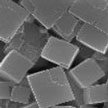 The ability to separate and purify specific molecules in a chemical mixture is essential to chemical manufacturing. By using membranes - rather than energy-intensive processes such as distillation and crystallization - the energy efficiency of these processes could be greatly increased. Crystalline materials known as zeolites are considered as an excellent membrane material due to their molecular-sized pores and high thermal, mechanical and chemical stabilities. In a new study, researchers prepared slice-shaped zeolite seeds by using various gel recipes and crystallization temperatures.
The ability to separate and purify specific molecules in a chemical mixture is essential to chemical manufacturing. By using membranes - rather than energy-intensive processes such as distillation and crystallization - the energy efficiency of these processes could be greatly increased. Crystalline materials known as zeolites are considered as an excellent membrane material due to their molecular-sized pores and high thermal, mechanical and chemical stabilities. In a new study, researchers prepared slice-shaped zeolite seeds by using various gel recipes and crystallization temperatures.
Aug 31st, 2015
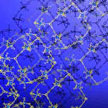 Previously reported conductive self-healing materials usually need large amounts of inorganic conducting fillers and their self-healing behaviors are only activated under specific external stimuli, such as heat, light, pH, etc. A new hybrid gel is composed of conductive polymer and a metal-ligand supramolecule; the novel gel exhibits attractive properties associated with both conventional polymers, such as ease of synthesis and processing, and great self-healing performance at room temperature without any stimuli.
Previously reported conductive self-healing materials usually need large amounts of inorganic conducting fillers and their self-healing behaviors are only activated under specific external stimuli, such as heat, light, pH, etc. A new hybrid gel is composed of conductive polymer and a metal-ligand supramolecule; the novel gel exhibits attractive properties associated with both conventional polymers, such as ease of synthesis and processing, and great self-healing performance at room temperature without any stimuli.
Aug 25th, 2015
 For the past decade, researchers have searched for robust, inorganic color filters that can replace traditional organic dye-based filters for better stability, lifetimes, performance, and amenability to miniaturization. I new work, researchers fabricated an inorganic filter that can operate with a single element. This represents an important step toward nanoscale color filters. The team devised a a simple design in which light can be filtered and tuned over wavelength through the use of a single nanoscale element in the form of a ZnO nanorod integrated with a silver cavity.
For the past decade, researchers have searched for robust, inorganic color filters that can replace traditional organic dye-based filters for better stability, lifetimes, performance, and amenability to miniaturization. I new work, researchers fabricated an inorganic filter that can operate with a single element. This represents an important step toward nanoscale color filters. The team devised a a simple design in which light can be filtered and tuned over wavelength through the use of a single nanoscale element in the form of a ZnO nanorod integrated with a silver cavity.
Aug 13th, 2015
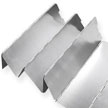 Glass is notorious for its brittleness. Although industry has developed ultra-thin, flexible glass that can be bent for applications liked curved TV and smartphone displays, fully foldable glass had not been demonstrated. Until now. In new work, researchers have demonstrated substrate platforms of glass and plastics, which can be reversibly and repeatedly foldable at pre designed location(s) without any mechanical failure or deterioration in device performances.
Glass is notorious for its brittleness. Although industry has developed ultra-thin, flexible glass that can be bent for applications liked curved TV and smartphone displays, fully foldable glass had not been demonstrated. Until now. In new work, researchers have demonstrated substrate platforms of glass and plastics, which can be reversibly and repeatedly foldable at pre designed location(s) without any mechanical failure or deterioration in device performances.
Aug 11th, 2015
 Researchers developed a simple controllable set-up for drawing single filament nanofibers from polymer solutions or melts using a rotating rod or a set of rods (round brush). This method can be used to produce 3D tissue scaffolds by winding nanofibers onto spools of different shapes and dimensions and depositing cells of interest at the same time. The new method, which the scientists named touch-spinning, has excellent control over the fiber diameter and is compatible with all kinds of polymeric materials, polymer melts and solutions, polymer composite materials, and biopolymers.
Researchers developed a simple controllable set-up for drawing single filament nanofibers from polymer solutions or melts using a rotating rod or a set of rods (round brush). This method can be used to produce 3D tissue scaffolds by winding nanofibers onto spools of different shapes and dimensions and depositing cells of interest at the same time. The new method, which the scientists named touch-spinning, has excellent control over the fiber diameter and is compatible with all kinds of polymeric materials, polymer melts and solutions, polymer composite materials, and biopolymers.
 Subscribe to our Nanotechnology Spotlight feed
Subscribe to our Nanotechnology Spotlight feed





